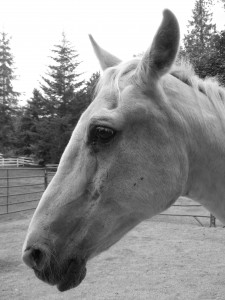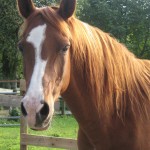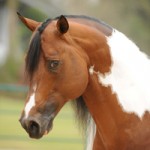Equine Expressions: Understanding Your Horse’s Body Language- Part 1
Another great article I’d like to share about understanding you horse’s body language. In Part 1 the article will explain communication by the:
–Ears, Eyes & Face
–Head, Neck & Tail
Enjoy!
——————————————————–
By Laurel Scott
Understanding equine body language is critical to successful horse-human interactions. Find out what it all means.
Oh, those ears–the way they flit back and forth! And that swishing tail! A horse can speak volumes using body language. But what exactly does all that mean? And how important is it that we know?
Understanding equine body language is critical to successful horse-human interactions.
Just ask Dr. Camie Heleski, coordinator of the Michigan State University Horse Management Program and lead instructor for My Horse University’s online Horse Behavior and Welfare Course, which is based out of Michigan State University. “Many horse accidents are a result of not reading the horse’s body language,” she explains. “We are working with a very large animal that still thinks primarily like a creature of prey, hence, being observant to their body language is possibly more important than when working with any other animal.”
Equines actually communicate using all five senses: sight, smell, hearing, touch and taste.
“Horses have evolved to live in cohesive groups (herds or bands) and their ability to interpret the postures and movements of their group members is important for their survival,” explains Professor Natalie Waran, senior vice president of the International Society for Equitation Science council and head of the School of Natural Sciences at Unitec New Zealand. “Body language in humans may not be that sophisticated due to the fact that we tend to use sounds to communicate; but horses appear to rely a great deal on using their tail, ears, mouths [and] postures, and these may or may not be linked with specific sounds or calls.”
Ears, Eyes & Face
The first thing you’re likely to notice about a horse’s expression is the position or movement of its ears. Regardless of their shape or size, they are almost always in motion and work independently, functioning much like equine radar.
Ears positioned forward generally indicate that the horse is relaxed, but if sharply pricked forward, take note! Your horse is alert and tuning into something that’s either interesting or frightening. As most horse owners know, there’s a difference between ears that are positioned towards the rear and those that are sharply pinned backwards. In the former case, the horse is likely either relaxed or listening to something behind him. In the latter case, it’s a sign of aggression that could be followed by a lunge, bite or kick. Watch out!
When trying to comprehend equine body language, one must also consider the eyes, nostrils, mouth, facial tension and attitude of the head and neck. These components often work together and are best interpreted in context, a talent one usually acquires with experience around horses in general and around your individual horse in particular.
“The horse has large eyes and is supersensitive to movement, as you would expect of a prey animal,” Waran says. “This is put to good use in observing body language, and humans are less aware of this non-verbal communication, due to being more vocal!”
There is one group of signals that is universal and easily recognized: the pricked ears, flared nostrils, wide eyes (often showing white) and elevated head and neck of a horse who is alert and ready to flee.
Other signals, like “snapping,” may be less familiar to the average horse owner. “‘Snapping’ is the behavior in which the immature horse opens and closes its mouth in a frightening circumstance,” explains Dr. Katherine Houpt, director of the Animal Behavior Clinic at Cornell University College of Veterinary Medicine. “For example, colts will do it when they approach the stallion. Mares in heat sometimes exhibit the same movement. All donkey mares do and it is called ‘yawing’ in that species. Snapping is an appeasement gesture: ‘Please don’t hurt me; I am just a baby horse.’”
Head, Neck & Tail
Speaking of head and neck position, remember that whatever artificial carriages performance classes may call for, a higher head and neck position in a horse generally indicates a state of arousal, while a lower position generally reflects a more relaxed state of mind.
At the opposite end of a horse’s body is another communication tool that is sometimes overlooked. Yes, equines use their tails to brush away pesky flies, but did you know that these handy body parts transmit language, too? Mind you, a horse’s natural tail carriage may vary by breed–the classic example being the high-tailed Arabian. However, there are some tail signals that are common to all breeds, and which a horse owner would be wise to heed.
For example, have you ever heard the expression “tail clamped between the legs”? If a horse has its tail pressed tightly against his buttocks, chances are it is nervous or fearful. By contrast, a tail that is carried unusually high usually indicates a hyper-alert state. Anyone who’s ever ridden a horse that is reluctant to work has probably witnessed the trademark “wringing” or fierce swishing of the tail, a sign of irritation or frustration. That is not to be confused, however, with the gentle, rhythmic swishing that sometimes accompanies a change in balance, like a lead change, for example.
Look out for Part 2 (Thursday) which deals with communication via:
–Legs, Posture & Voice
–Olfactory Signals
–Horses vs. Other Animals




